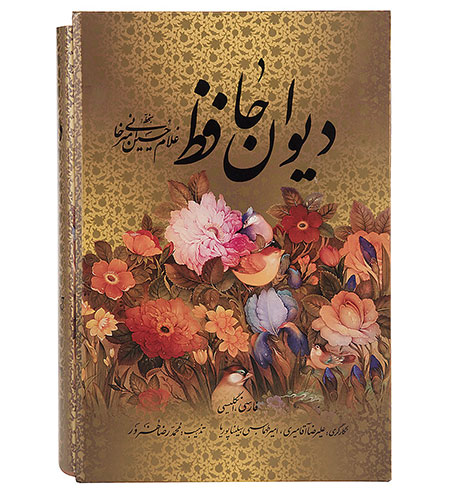biography of Hafez

Hafez was born in the beautiful city of Shiraz in Persia (now Iran ) between 1317 and 1326. As a young child he was called Shams –ud-din Mohammed. Hafez proved to have a prodigious talent for literature. At an early age he successfully memorized the Qu'ran(Koran), and this is why he took the pen name of “Hafez” (Hafez means one who has memorized the entire Qu'ran(Koran) by heart). As well as studying the Qu'ran(Koran) Hafez was also introduced to the other great Sufi poets such as Rumi, Farid –ud-din Attar and Saadi, these Sufi poets would later have some influence on the poetry of Hafez.
Hafez lived during the reign of Abu Eshaq Inju (1343 - 53), Mobarez-od-Din (1353 - 58), and Shah Shoja the Mozaffarid (1358 - 85). There are few if any facts regarding Hafez's relations with the rulers of his time. Abu Eshaq and Shah Shoja were cultured rulers with a love for literature, but Mobarez-od-Din was a bigoted ascetic responsible for many executions under the guise of religion. He is often indirectly referred to by Hafez as mohtaseb the much-hated censor who indulged in controlling not only the business in the bazaars, but also the morals of the people.
He grew up in an age when the finest Arabic literature had already been written and when Persian poetry had reached the zenith of its romantic era. What was left for Hafez was the highest attainment yet of lyrical poetry, the ghazal. His poetry proves also that he was very well versed in the sciences of his day. Like all Persian poets of the middle Ages, Hafez was a court poet and panegyrist dependent on the good will of his patrons. Since he was a Shiite Moslem rather than a Sunnite, as was the prescribed religion of the day, he had to be careful what he wrote.
The poems of Hafez have a beautiful and musical quality, which also embody a great spontaneity. In a myriad of poetic ways, Hafez expresses the spiritual experiences of a mystic, in love with his Beloved. Yet he achieves this in a playful and enchanting way, like other Sufi poets, Hafez weaves themes of ambiguity into his poems. Often he will use secular images such as wine, drunkenness and human love; however these are just symbols for the divine experiences which Hafez is alluding to.
In 1387, after Tamerlane had conquered all of Persia , he came to Shiraz to visit with Hafez for 2 months. The most productive period of Hafez's life was over, and he died 3 years later in Shiraz , but his fame was well deserved. No other poet up to his time in the Islamic world was such a superb linguist and literary craftsman. He took the poetic forms of the day so far beyond the work of his predecessors that he practically cut off all succession. Over 600 poems are attributed to Hafez, most of them both mystical and lyrical. His work was meant to be understood on many levels, which was typical of the poetry of his day. Hafez's major work, the Divan, was a collection of short odes known metrically as ghazals.
What others say about Hafez:
Goethe: In his poetry Hafez has inscribed undeniable truth indelibly ... Hafez has no peer!
Emerson: Hafez defies you to show him or put him in a condition inopportune or ignoble ... He fears nothing. He sees too far; he sees throughout; such is the only man I wish to see or be.
Sir Arthur Conan Doyle: ...You may remember the old Persian saying, 'There is danger for him who taketh the tiger cub, and danger also for whosoever snatches a delusion from a woman.' There is as much sense in Hafez as in Horace, and as much knowledge of the world.
Edward Fitzgerald: The best musician of Words.
Gertrude Bell: It is as if his mental eye; endowed with wonderful acuteness of vision, had penetrated into those provinces of thought which we of a later age were destined to inhabit.
A. J. Arberry: ... Hafez is as highly esteemed by his countrymen as Shakespeare by us, and deserves as serious consideration.


























